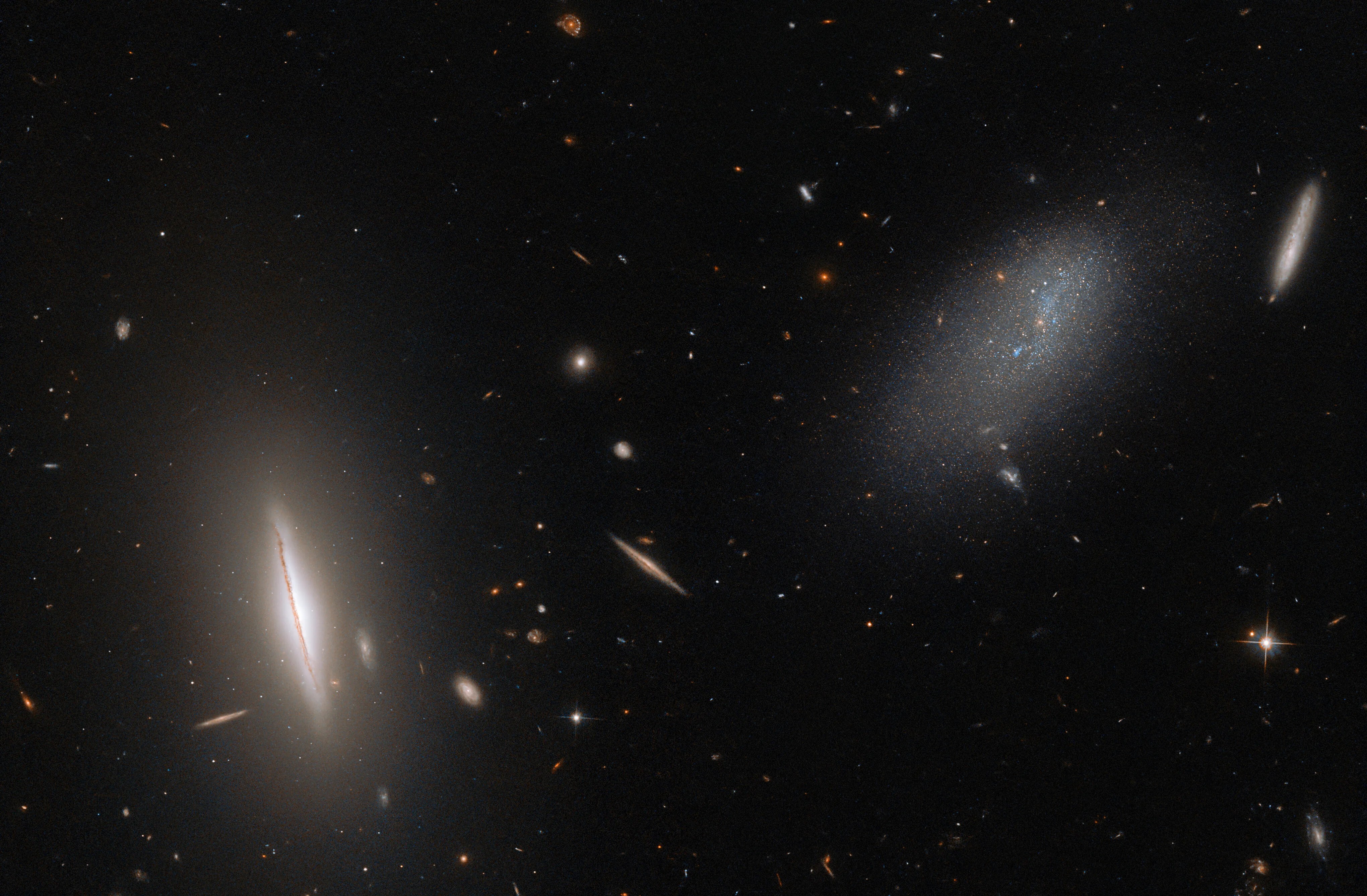1 min read

This image from the NASA/ESA Hubble Space Telescope features the galaxy LEDA 48062 in the constellation Perseus. LEDA 48062 is the faint, sparse, amorphous galaxy on the right side of the image, and it is accompanied by a more sharply defined neighbor on the left – the large, disk-like lenticular galaxy UGC 8603. A smattering of more distant galaxies litter the background while a handful of foreground stars shine brightly throughout the image.
Hubble recently spent some time studying our galactic neighbors. LEDA 48062 is only around 30 million light-years from the Milky Way and was therefore included in the observing campaign Every Known Nearby Galaxy. The aim of this campaign was to observe every known galaxy within 10 megaparsecs (around 33 million light-years) of the Milky Way. By getting to know our galactic neighbors, astronomers can determine what types of stars reside in various galaxies and also map out the local structure of the universe.
Text credit: European Space Agency (ESA)
Media Contact:
Claire Andreoli
NASA's Goddard Space Flight Center, Greenbelt, MD
301-286-1940







